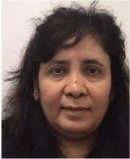|
Plenary
Lecture
Digital Video Tamper and Forgery Detection Techniques

Assistant Professor Girija Chetty
University of Canberra
Australia
E-mail:
Girija.Chetty@canberra.edu.au
Abstract:
DIGITAL Image tampering or forgery has become major
problem lately, due to ease of artificially synthesizing
photographic fakes- for promoting a story by media
channels and social networking websites. This is due to
significant advances in computer graphics and animation
technologies, and availability of low cost off-the-shelf
digital image manipulation and cloning tools. With lack
of proper regulatory frameworks and infrastructure for
prosecution of such evolving cyber-crimes, there is an
increasing dissatisfaction about use of such tools for
law enforcement, and a feeling of cynicism and mistrust
among the civilian operating environments.
Another problem this has lead to, is a slow diffusion of
otherwise extremely efficient image based surveillance
and identity authentication technologies in real-world
civilian operating scenarios. In this talk, we present
novel algorithmic frameworks being developed for
detecting image tampering and forgery based on different
source features, their transformation in optimal
subspaces and and statisical modelling of intra-frame
and inter-frame image pixel sub blocks in video
sequences. The proposed algorithmic models allow
detecting the tamper or forgery in low-bandwidth video
(Internet streaming videos), using blind and passive
tamper detection techniques and attempt to model the
source signatures embedded in camera pre-processing
chain, and show immense potential in detections of
evolving image tampering attacks, such as JPEG double
compression, re-sampling and retouching. The promising
results obtained can result in the development of
digital image forensic tools, that can help investigate
and solve evolving cyber crimes.
Brief Biography of the Speaker:
Dr. Girija Chetty has a Bachelors and Masters degree in
Electrical Engineering and Computer Science from India
and a PhD in Information Sciences and Engineering from
University of Canberra, Australia. Presently she is a
Assistant Professor in Software Engineering in
University of Canberra, and her research interests are
in the area of Biometric Security, Computational
Intelligence, Image Processing, Computer Vision and
Pattern Recognition. She has published extensively in
refereed conferences and journals serves on Editorial
Board and International Program and Review Committee'
for several conferences and journals related to her
research interests.
|
